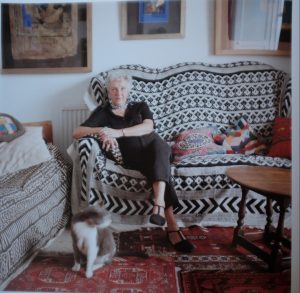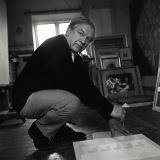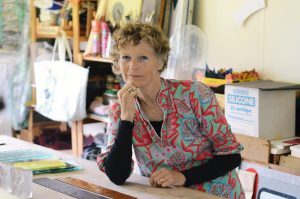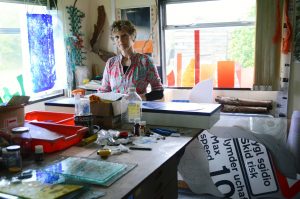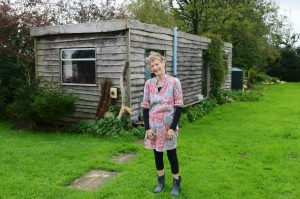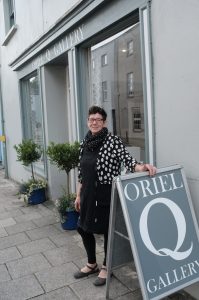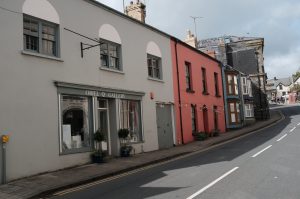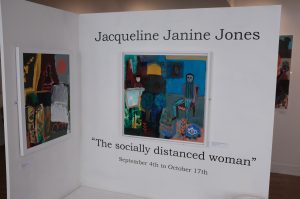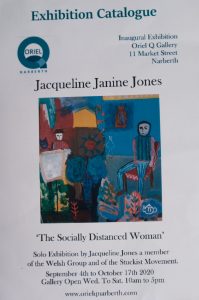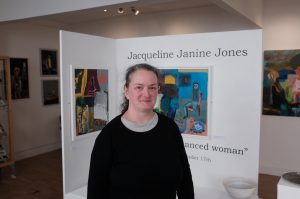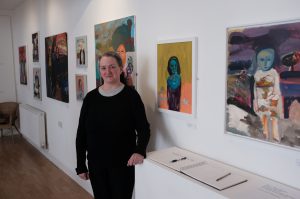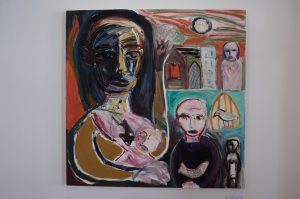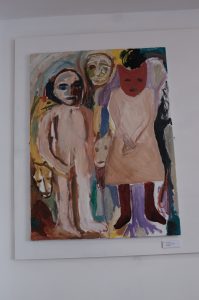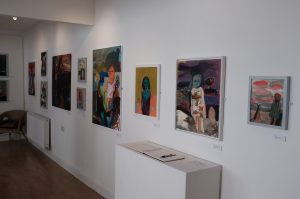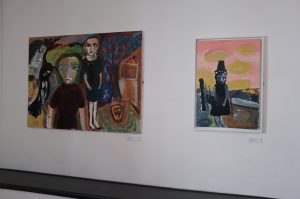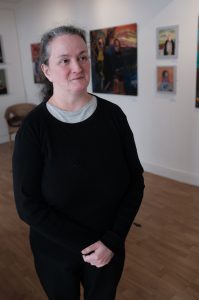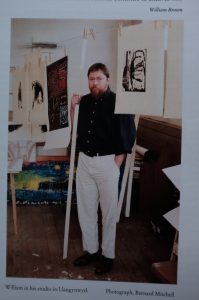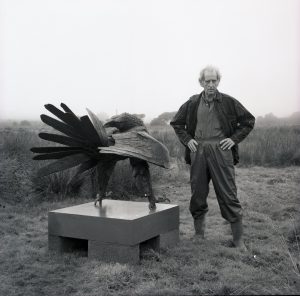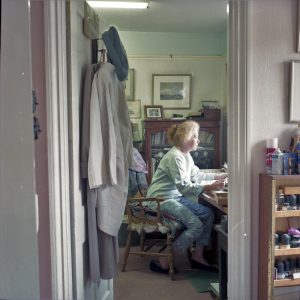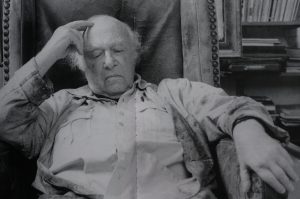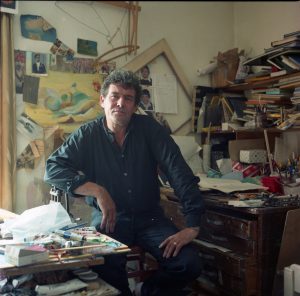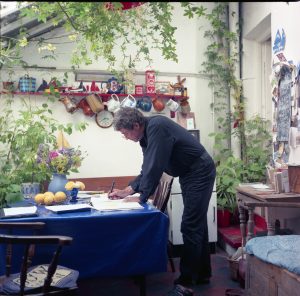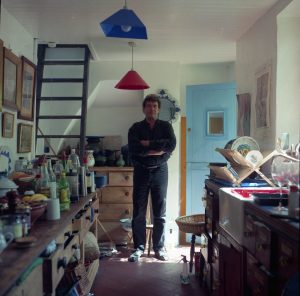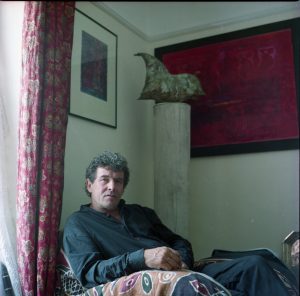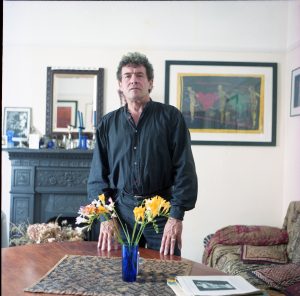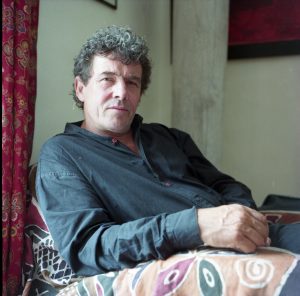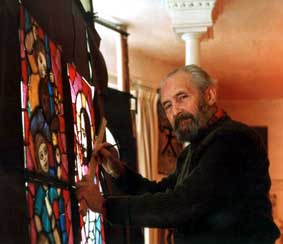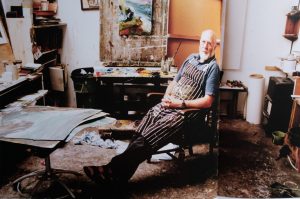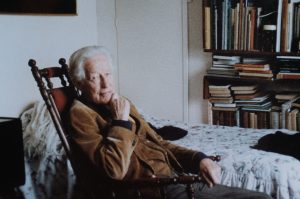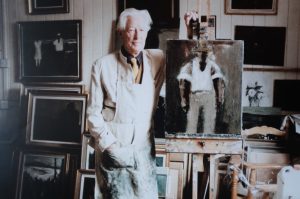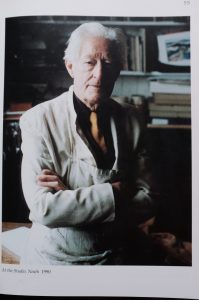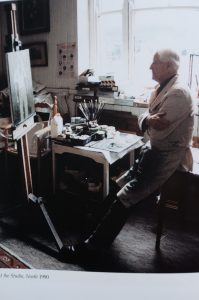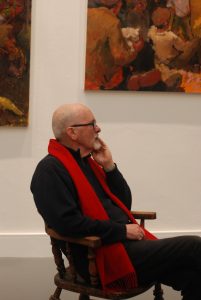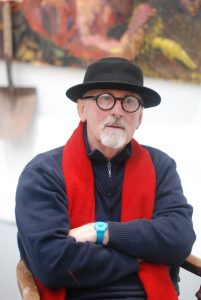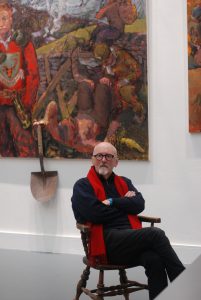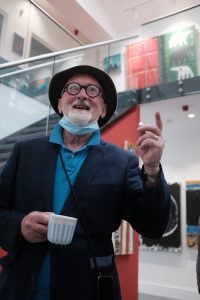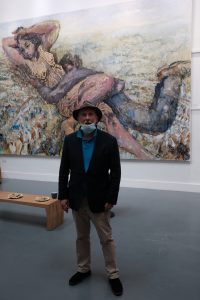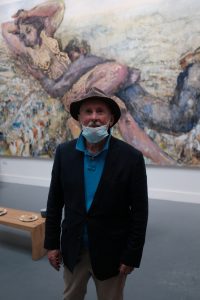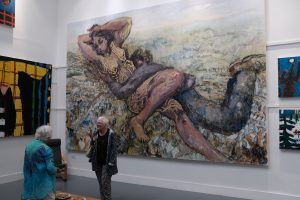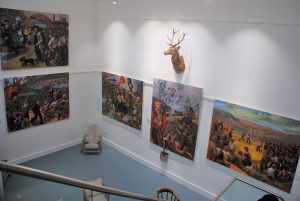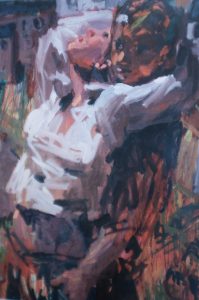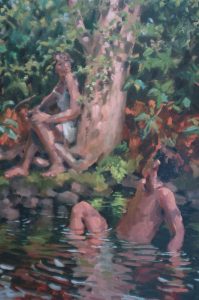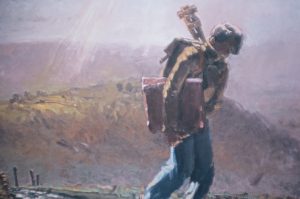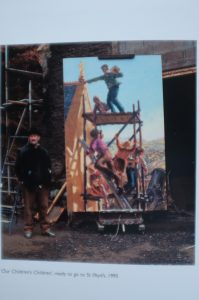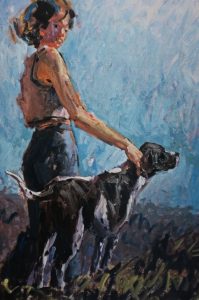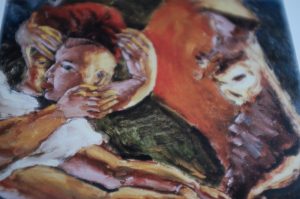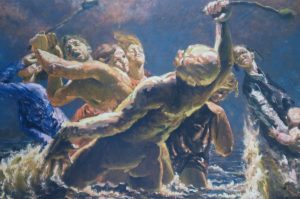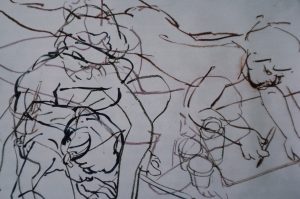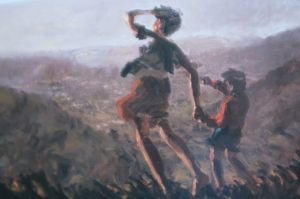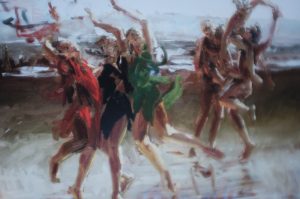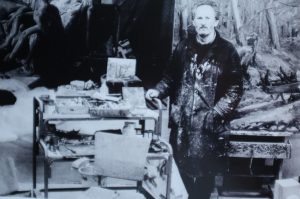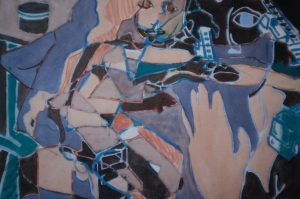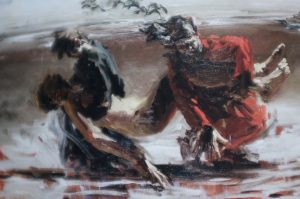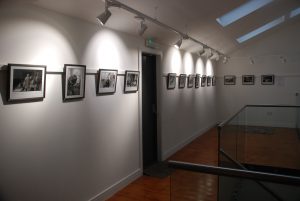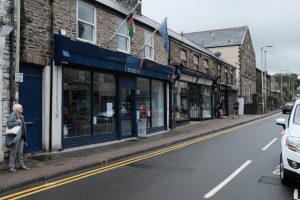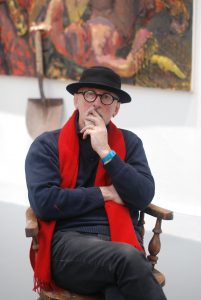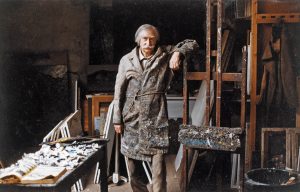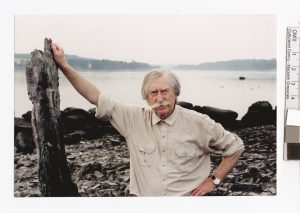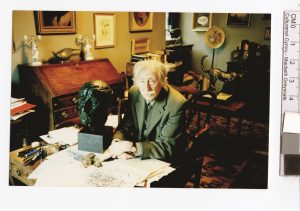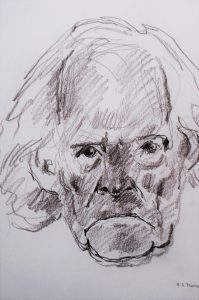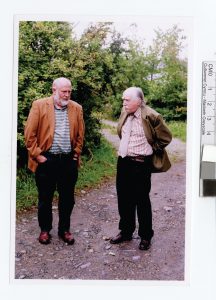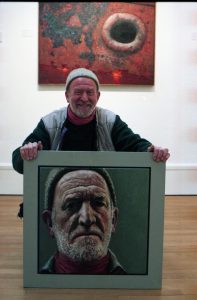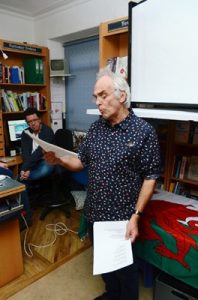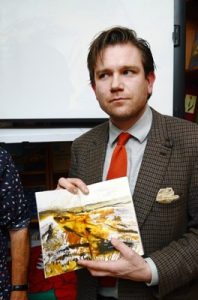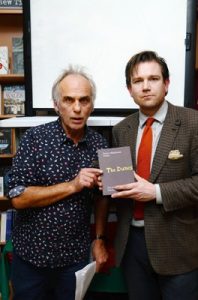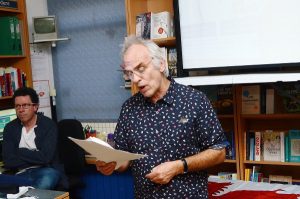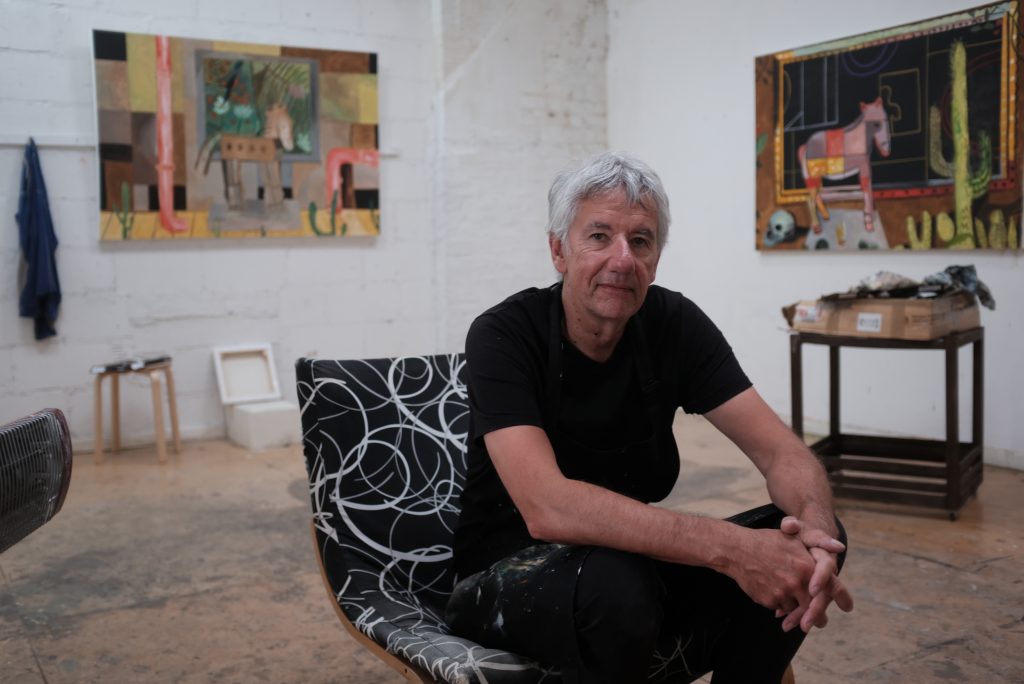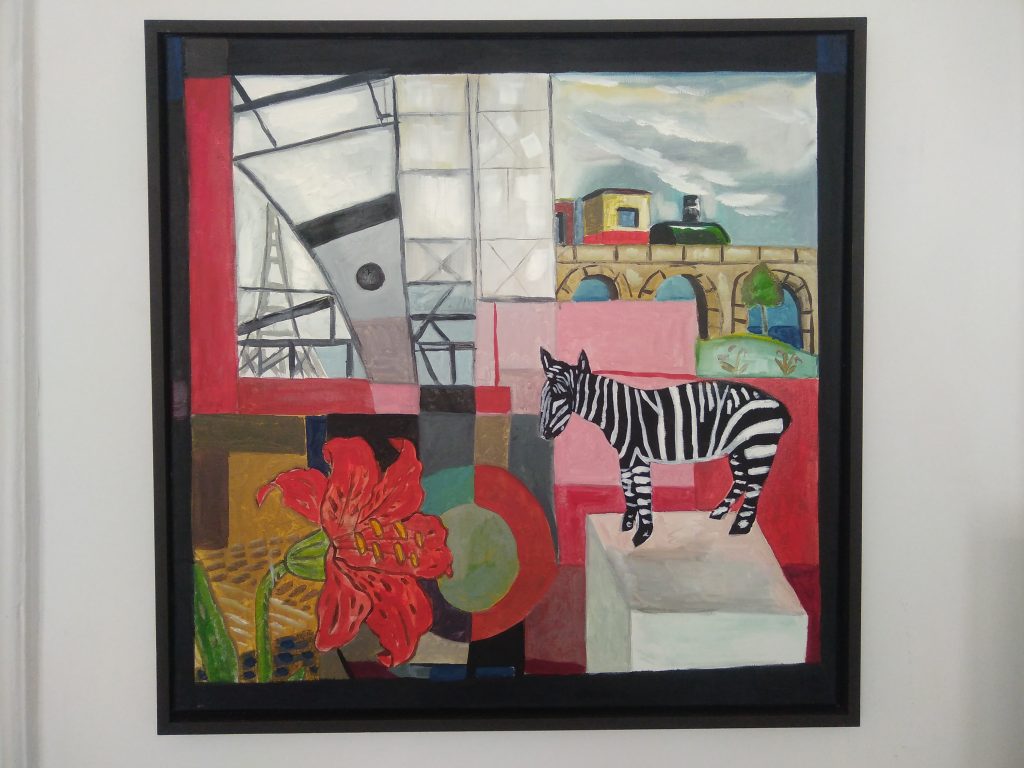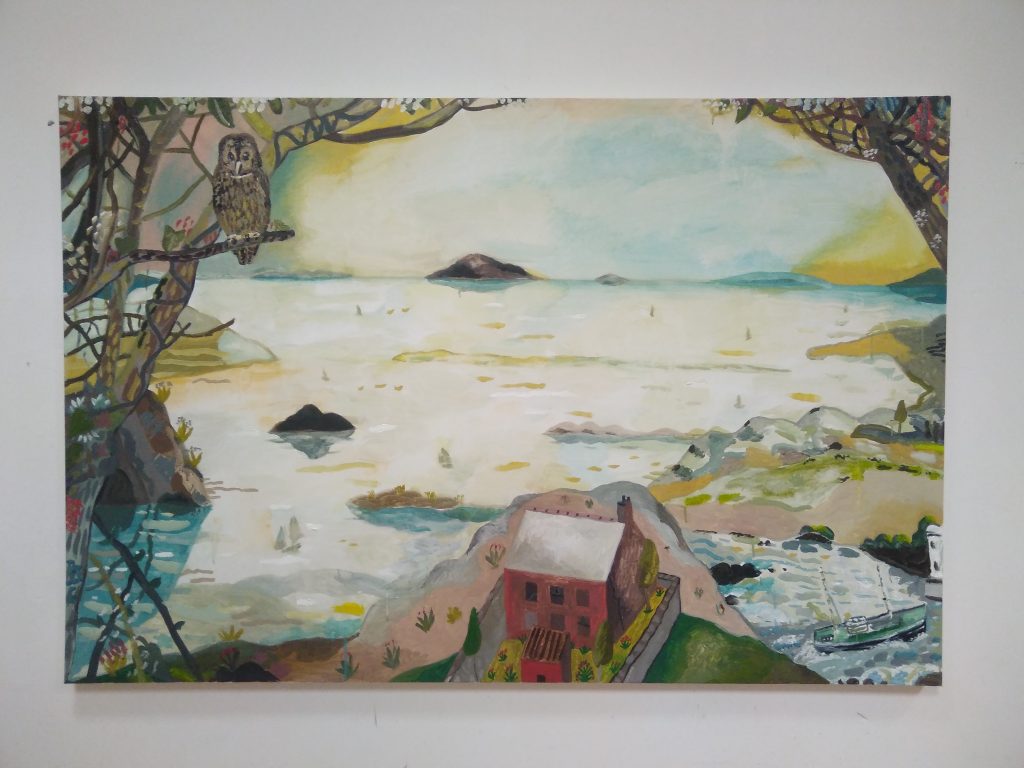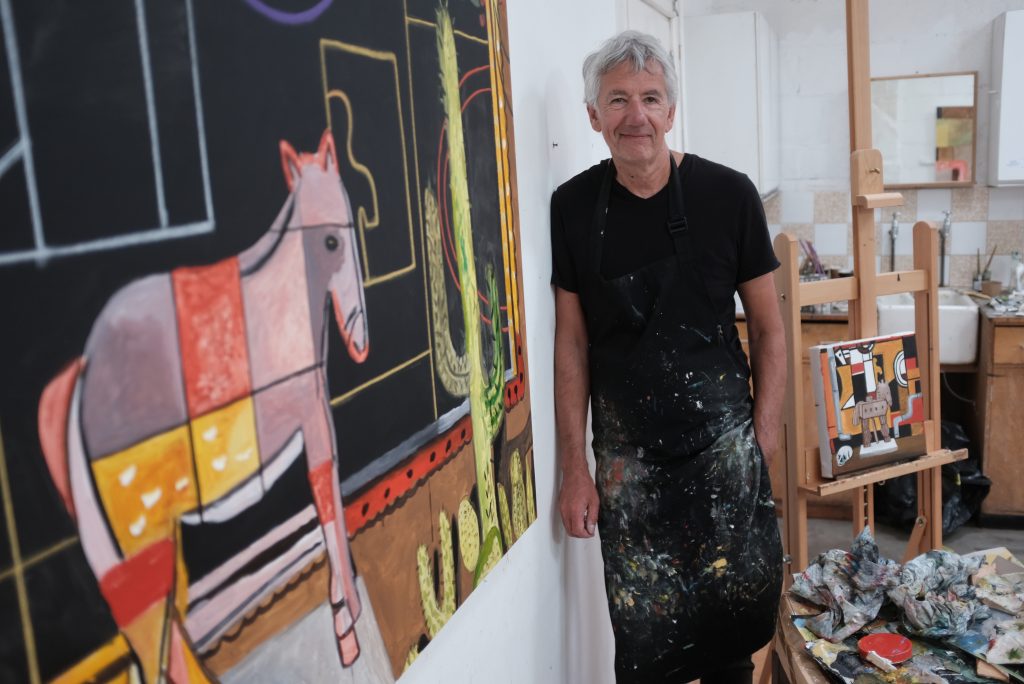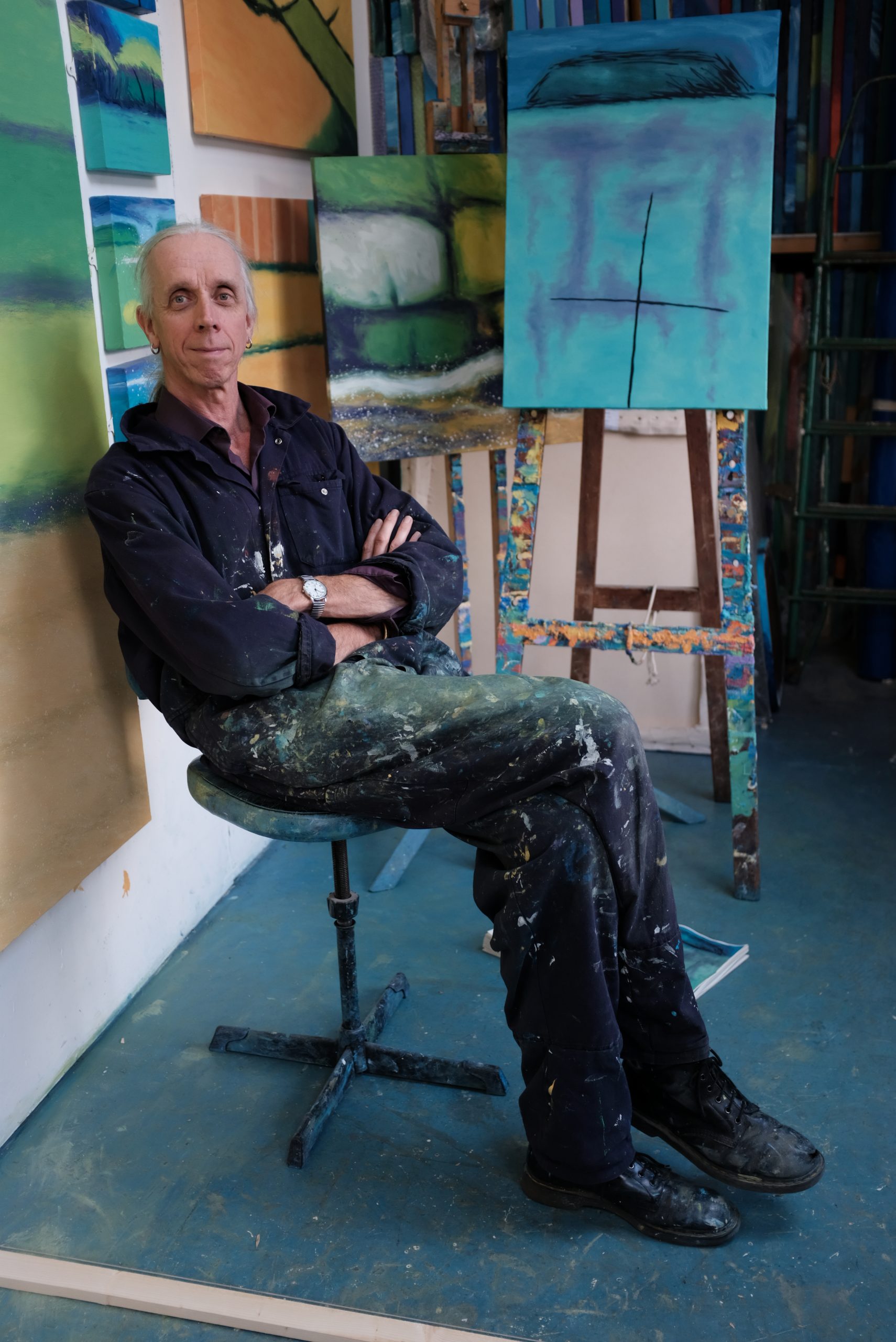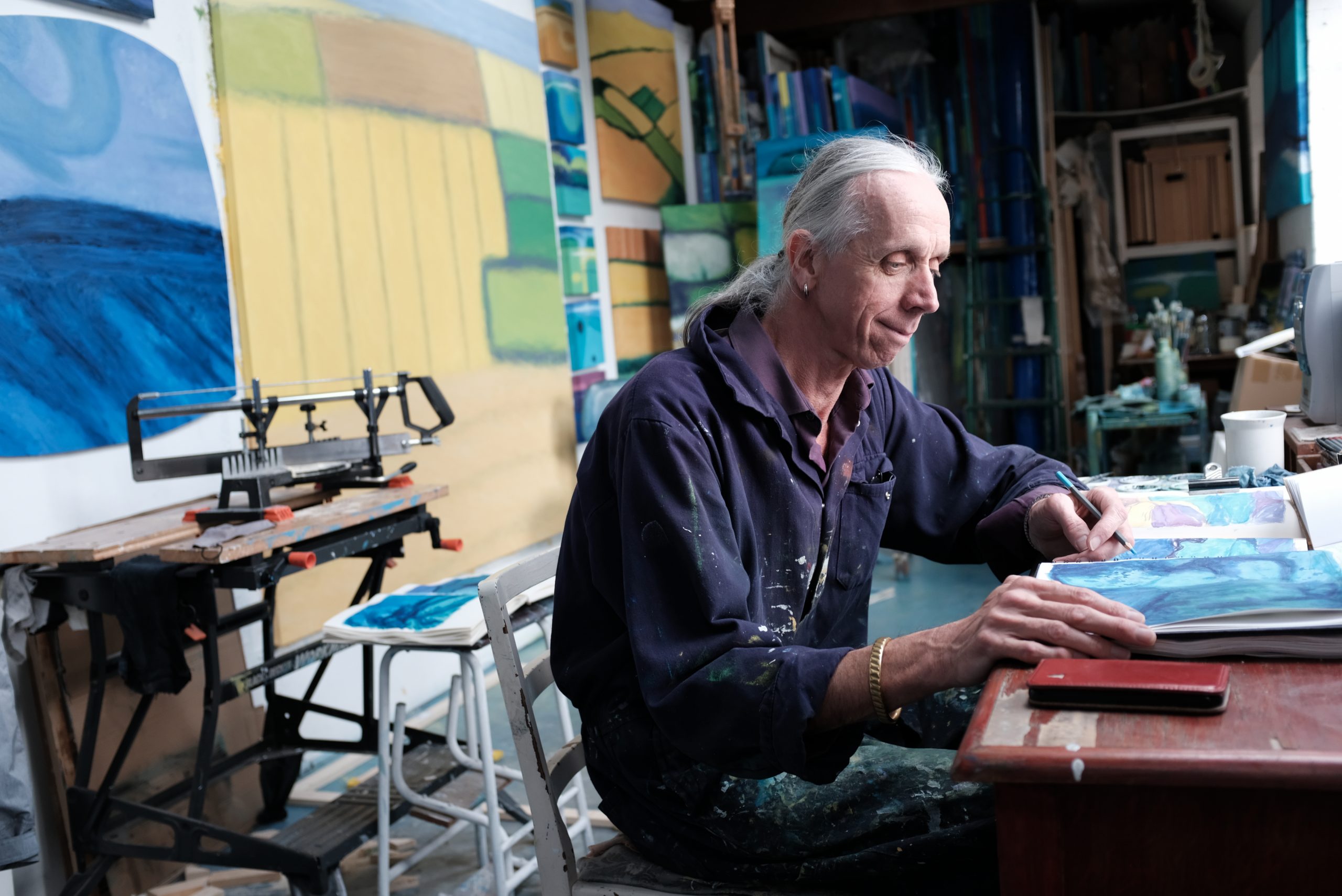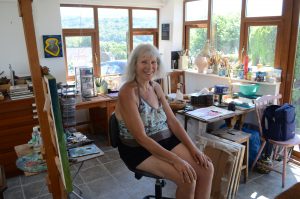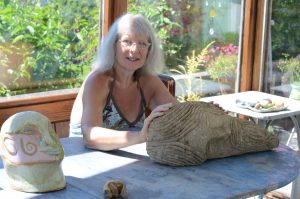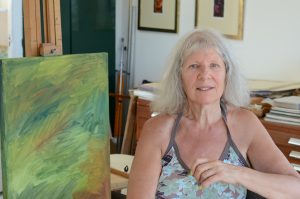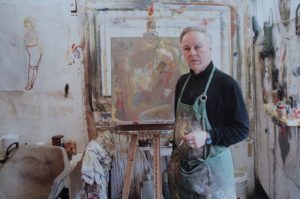
John Selway, Studio, Abertillery, 2003.
John Selway was born in Askern in Yorkshire in 1938, and moved to his mothers family home in Ash Tree Terrace, in Six Bells near Abertillery where his grandmother had a small holding and John attended the local Junior school, near the house, where he was already drawing on slates or in his exercise book. During the Summer months he spent time with his grandmother and step grandfather on their farm on the Herefordshire/Welsh Border.
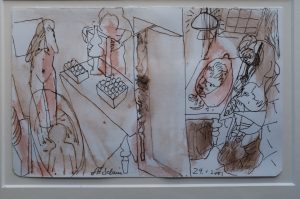
Page from sketchbook for Fern Hill Series.
I photographed John in the studio at his home in Abertillery, which he had built himself out of various pieces of wood, and board, well lit and with a large window over looking the Ebbw Bach valley, the river Tyleri and the wooded hillside. Heated by a wood burning stove it was big enough to take six-foot canvas and had all the comforts of home.
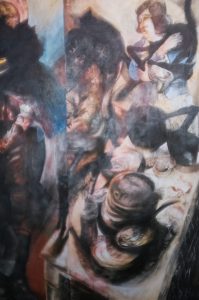
Ash Tree Terrace, detail.
John was one of the talented valley artists who traveled by bus and train to art college, as did Burton, Sinnott and Zobole. In his case it was Newport College of Art, and on to the Royal College of Art in London, with a break for National Service and returning to Newport College of Art to become a Senior Lecturer for the next twenty five years. At the RCA a fellow student, was David Hockney and Mark Rothko was a tutor, but John returned to his home town, Abertillery. Although he left behind the hi-life and International fame, he travelled the world, but always returned to his roots in the valleys.
We sat and talked in his modest home about Dylan Thomas and the Poem that he was working on at the time ‘Fernhill’ before I left he let me have a fine pen drawing with a delicate red water colour wash, a page of his sketch book. The working drawing had a naked girl standing and a boy sitting in a tin bath, chickens being killed and plucked, boxes of eggs and oil lamps. This was not the Fern Hill of Dylan’s poem, but John’s own memory of childhood at Ash Tree Terrace, Six Bells, up the valley from Abertillery or on his maternal grand mothers farm in the Golden Valley on the Herefordshire/Wales border which he visited in the Summer.
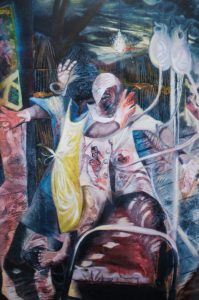
Stations of the Cross, St Michael’s Church, Abertilery.
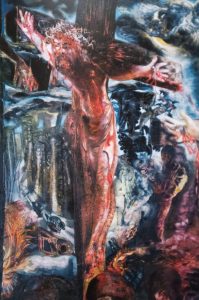
Stations of the Cross, St Michael’s Church Abertillery.
Fern Hill
Now as I was young and easy under the apple boughs
About the lilting house and happy as the grass was green,
The night above the dingle starry,
Time let me hail and climb
Golden in the heydays of his eyes,
And honoured among wagons I was prince of the apple towns
And once below a time I lordly had the trees and leaves
Trail with daisies and barley
Down the rivers of the windfall light.
And as I was green and carefree, famous among the barns
About the happy yard and singing as the farm was home,
In the sun that is young once only,
Time let me play and be
Golden in the mercy of his means,
And green and golden I was huntsman and herdsman, the calves
Sang to my horn, the foxes on the hills barked clear and cold,
And the sabbath rang slowly
In the pebbles of the holy streams.
All the sun long it was running, it was lovely, the hay
Fields high as the house, the tunes from the chimneys, it was air
And playing, lovely and watery
And fire green as grass.
And nightly under the simple stars
As I rode to sleep the owls were bearing the farm away,
All the moon long I heard, blessed among stables, the nightjars
Flying with the ricks, and the horses
Flashing into the dark.
And then to awake, and the farm, like a wanderer white
With the dew, come back, the cock on his shoulder: it was all
Shining, it was Adam and maiden,
The sky gathered again
And the sun grew round that very day.
So it must have been after the birth of the simple light
In the first, spinning place, the spellbound horses walking warm
Out of the whinnying green stable
On to the fields of praise.
And honoured among foxes and pheasants by the gay house
Under the new made clouds and happy as the heart was long,
In the sun born over and over,
I ran my heedless ways,
My wishes raced through the house high hay
And nothing I cared, at my sky blue trades, that time allows
In all his tuneful turning so few and such morning songs
Before the children green and golden
Follow him out of grace,
Nothing I cared, in the lamb white days, that time would take me
Up to the swallow thronged loft by the shadow of my hand,
In the moon that is always rising,
Nor that riding to sleep
I should hear him fly with the high fields
And wake to the farm forever fled from the childless land.
Oh as I was young and easy in the mercy of his means,
Time held me green and dying
Though I sang in my chains like the sea.
Dylan Thomas
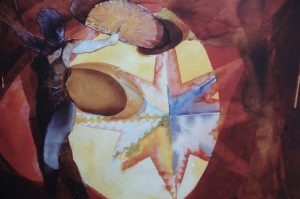
Circus Tightrope Walker
The poem had become a surreal memory of his childhood , a dream like fantasy.
John had drawn the circus at school, but later as an adult his love of the circus and a Welsh Arts Council grant took him to Spain to paint the traveling circus.
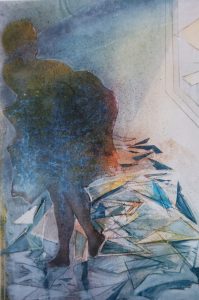
Holocaust Broken Windows.
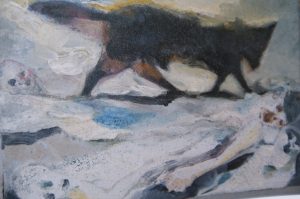
Holocaust Fox
He visited Auschwitz, and here his sensual dreams turn into a nightmare in his series of paintings of the Holocaust and return again in the series of fifteen paintings, ‘ The Stations of the Cross’ in St Michael’s the Archangel, Abertillery, It is not just the story of the journey to the crucifixion but one that takes the journey from the German pogrom to the current events in the middle east and America.
Bernard Mitchell 2020
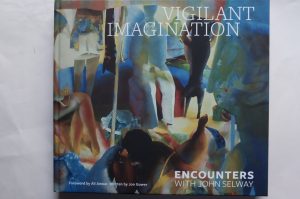
Vigilant Imagination – Encounters with John Selway by Jon Gower.
The H’mm Foundation in collaboration with Three Imposters published: Vigilant Imagination – Encounters with John Selway – Written by Jon Gower. ISBN 978-1-9999522-0-4.
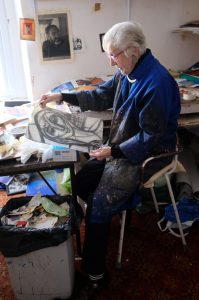 Glenys Cour studied at the Cardiff College of Art, where Ceri Richards taught illustration. She was also taught by another Swansea artist Alfred Janes. She was appointed to the staff of the Swansea College of art by the then director of the department of stained glass Tim Lewis to teach colour research and the importance of its use in architectural glass. As in her paintings she brought to the stained glass the power of Colour, which has been passed on to her pupils who have become internationally recognised. Such as the Swansea based artists Alex Beleschenko, Amber Hiscott, and Catrin Jones to name but a few.
Glenys Cour studied at the Cardiff College of Art, where Ceri Richards taught illustration. She was also taught by another Swansea artist Alfred Janes. She was appointed to the staff of the Swansea College of art by the then director of the department of stained glass Tim Lewis to teach colour research and the importance of its use in architectural glass. As in her paintings she brought to the stained glass the power of Colour, which has been passed on to her pupils who have become internationally recognised. Such as the Swansea based artists Alex Beleschenko, Amber Hiscott, and Catrin Jones to name but a few.
